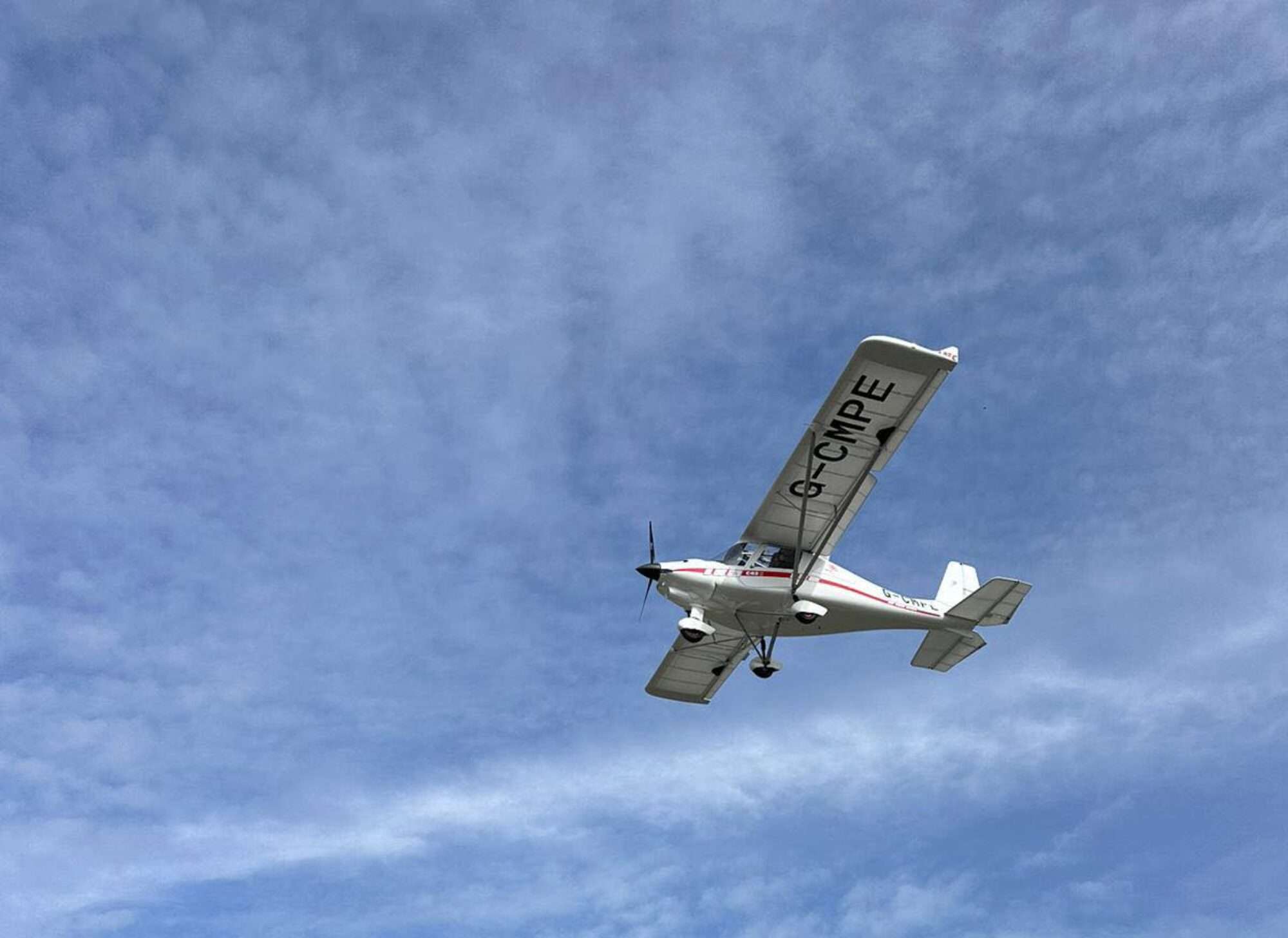The weather forecast for today all week had been low winds with broken cloud at 3,000ft with good visibility, so as I have had a few lessons cancelled I thought I would take advantage of the nice Easter bank holiday Sunday weather and book a lesson followed by an hour solo. On arriving at Chatteris it was a gloomy day, this has its benefits in that the parachutists would be grounded! But Mike was also concerned that the weather may not be suitable for a solo, however we would wait and see what it was like following my lesson.
My lesson today would be PFLs and Flapless landings; we took off on 01 and for the first time in this direction Mike closed the throttle and declared an engine failure! I put the nose down, but there was nowhere to go, well other than a young oilseed rape field, not ideal, but we would walk from it, if this was a real engine failure. We powered up and went around and flew a couple of normal circuits to start with, but we were to come in on the orange triangle (52 kt – Recommended Minimum Approach Speed) we normally come in at 60kt. Then on the third circuit we did a touch and go without flaps, I needed to sideslip to get down as I had left the power on far too long, it is surprising how far you float and how slowly you come down on a still day without flaps!



We then left the circuit as the sky had cleared enough for the parachutists to be up and to call “Clear-Drop”. We left to the south as we knew Katie and Julie were to the East; as it turned out they aborted the drop and returned to the airfield as the visibility was not great.
Out to the south we did a few PFLs and I was again not great, but a little better with each one.
Time was up and I flew us back to the airfield and did another flapless landing. Once we were parked up Mike debriefed me as normal, but his words hit home, “I must fly the PFLs as if my life depended on them, I need to do all that I can to get into a field and not simply say that “I didn’t make it and power up and go around!”, Chilling words of wisdom.
The weather had cleared up sufficiently for me to go solo which I did under Katie’s supervision as Mike was off flying with his son. I flew out to the East and practiced trimming and did 3 PFLs, all went well, even my PFLs, I need to sideslip, but at 600ft they were looking good, we don’t go any lower when solo to ensure we don’t fall foul of the 500ft rule and for safety.
I flew back to Chatteris and could see the parachute plane on the ground so I joined base leg and landed normally, it was a very soft landing, which I thought felt good. I taxied back and went in where Katie was waiting for me and asked how it had gone and also comment on my landing looking good!
I gave the aeroplane a quick wash and put it away with Katie’s help before heading home from an enjoyable days flying.
































